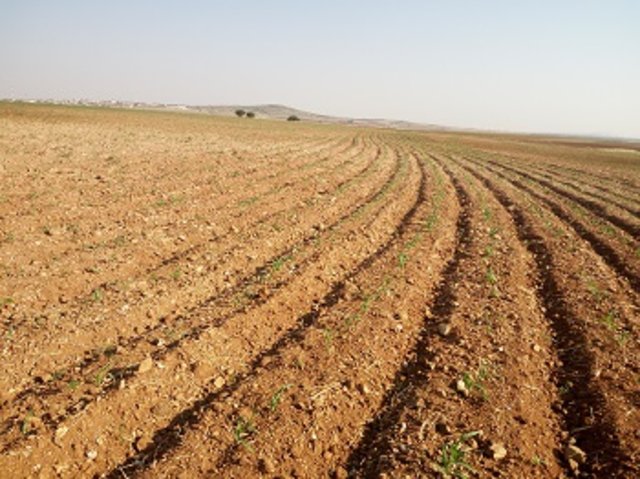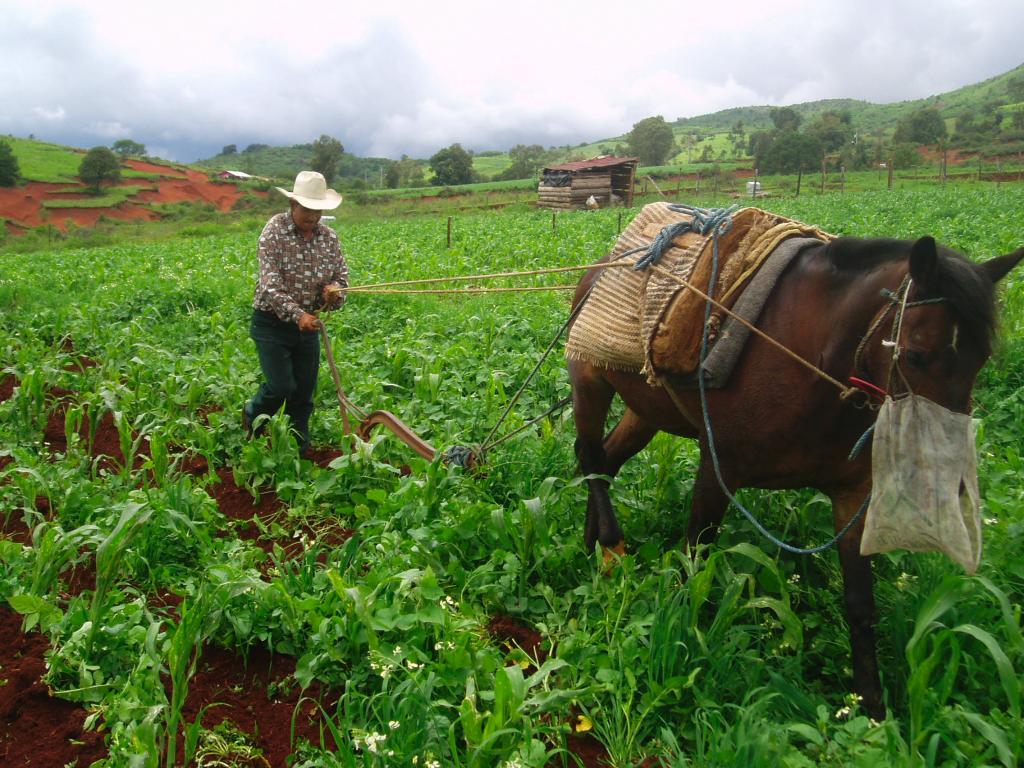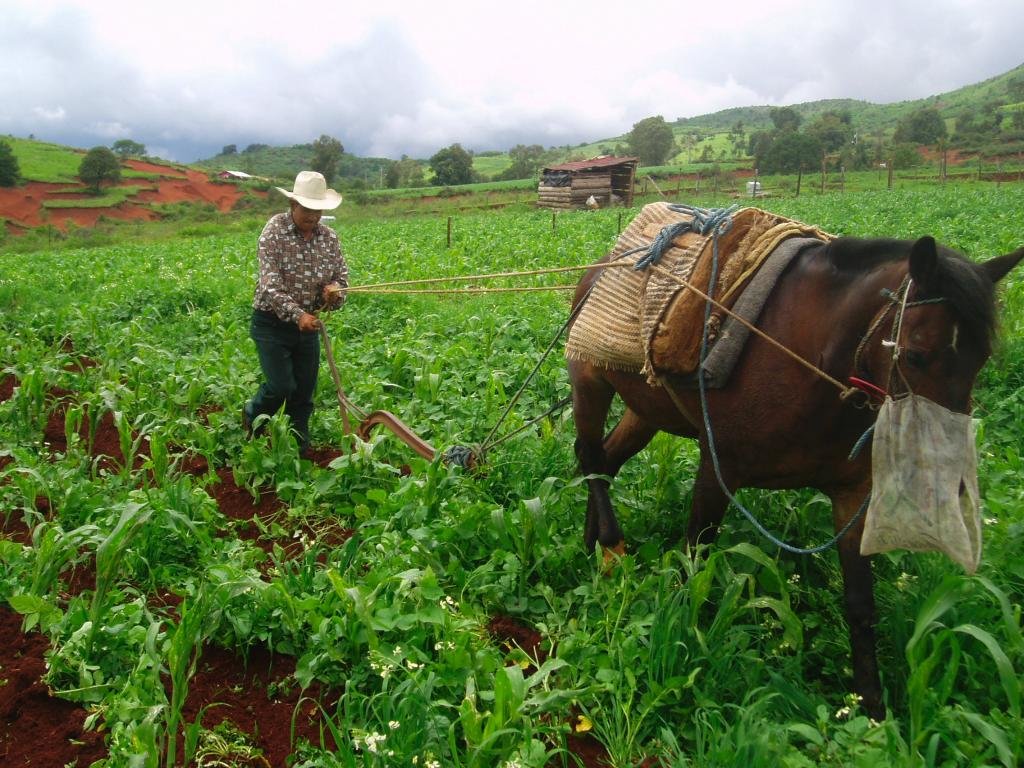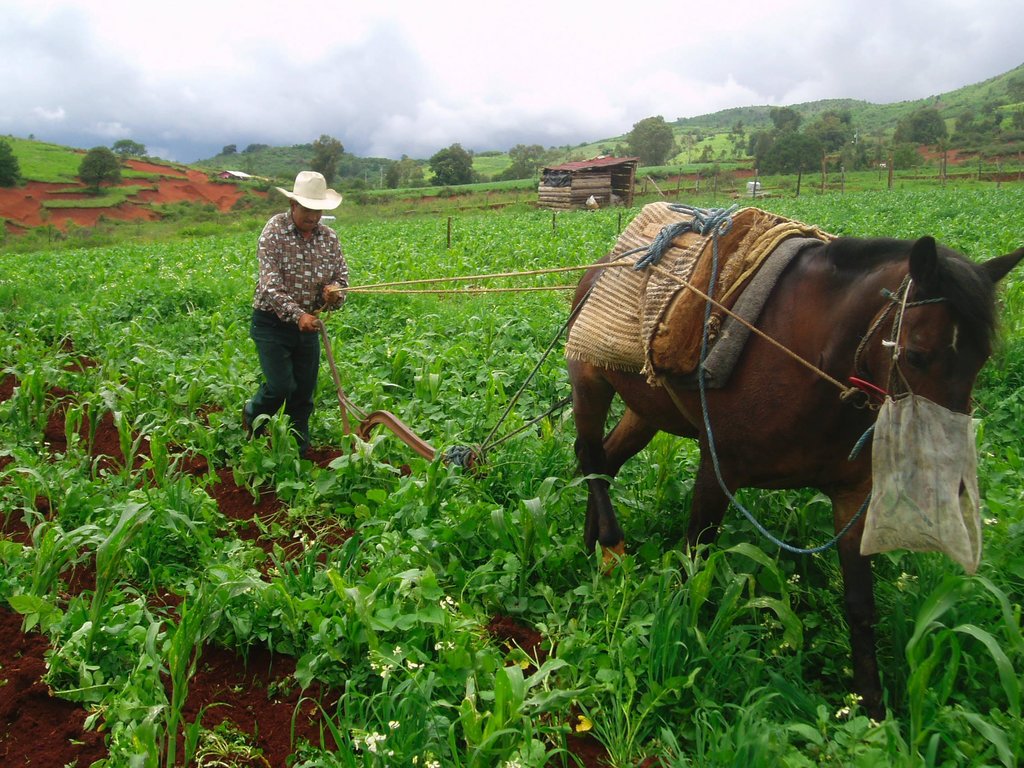Residue management of anual crop of maize/bean association [Mexique]
- Création :
- Mise à jour :
- Compilateur : Christian Prat
- Rédacteur : –
- Examinateur : Fabian Ottiger
Manejo de rastrojo de cultivo anual de la asociación maiz/frijol
approaches_2579 - Mexique
Voir les sections
Développer tout Réduire tout1. Informations générales
1.2 Coordonnées des personnes-ressources et des institutions impliquées dans l'évaluation et la documentation de l'Approche
Nom du ou des institutions qui ont facilité la documentation/ l'évaluation de l'Approche (si pertinent)
Institut de recherche pour le développement IRD (Institut de recherche pour le développement IRD) - France1.3 Conditions relatives à l'utilisation par WOCAT des données documentées
Le compilateur et la(les) personne(s) ressource(s) acceptent les conditions relatives à l'utilisation par WOCAT des données documentées:
Oui
1.4 Références au(x) questionnaire(s) sur les Technologies de GDT

Sistemas de prácticas de MST en suelos con … [Mexique]
El sistema de prácticas de MST en planicie con pendiente no mayores del 5%, la cual consiste en la rotación de cultivos en dos ciclos denominados primavera-verano y otoño-invierno, donde en una parcela de 5 hectáreas se combinan frijol-avena y maíz-calabaza y triticale. Para el caso de la rotación frijol-avena, …
- Compilateur : Alejandra Castillo
2. Description de l'Approche de GDT
2.1 Courte description de l'Approche
Maize residue management with high input of crop residues and annual crop instead of year one crop and fallow in year 2
2.2 Description détaillée de l'Approche
Description détaillée de l'Approche:
Aims / objectives: The objetive is to evaluate the influence of different agronomic systems including conventional system (one year tillage and one year fallow), conservation system (high input of crop residues) with mineral fertilizers every year, conservation system (high input of crop residues) with organic fertilizer every year on: water run-off (quantity and quality), soil sediment transports, soil water content, soil cover, carbon capture, soils characteristics and their interactions with the production of the maize/bean crop association on Acrisol
Methods: Primary tillage for maize/beans it consisted in moldboard ploughing and furrowing, and one post-emergence weeding was done manually. Depth of tillage for moldboard plow was about 0.20m and for rototill, about 0.15 m. 3 seeds of corn or beans are planted and covered by foot. Fertilizer is put on the depression just after seeding and one month later during the post emergence weeding. This experiment have been done on Acrisol
Stages of implementation: The experiment is finished. Dissemination to the stakeholders and policy makers has been done. Policy makers took the results and are disseminating it to the other stakeholders
Role of stakeholders: Active. Visit to the field experiment site during the experimentation, workshops, etc...but the adoption of the technologies can be effective only if the system is deeply change. Farmers need thei fallow year for their animals. This proposal is just one element of the whole system to change.
Other important information: Important results to understand and measure the soil erosion and run-off with this kind of soil (Acrisol) with the traditionnal and improaved cultural system
2.3 Photos de l'approche
2.5 Pays/ région/ lieux où l'Approche a été appliquée
Pays:
Mexique
Région/ Etat/ Province:
Mexico/Michoacán
Autres spécifications du lieu :
Morelia
2.6 Dates de début et de fin de l'Approche
Indiquez l'année de démarrage:
2002
Date (année) de fin de l'Approche (si l'Approche n'est plus appliquée):
2008
2.7 Type d'Approche
- fondé sur un projet/ programme
2.8 Principaux objectifs de l'Approche
The Approach focused on SLM only (Soil conservation, water conservation, crop residue management, organic fertilizers, maize/bean association)
The area is strongly eroded and it was necessary to understand which factors could explain this situation and try agronomic alternatives to proposed to farmers to reduce it. In fact soil erosion is mainly due to the cattle free grazing in the field during the fodder and in commune land use for other part. The elimination of fodder year reduce presence of animals and increase production/productivity which can be given to the cattle. But this means to have less animals, more works and normally, more beneficits!
The SLM Approach addressed the following problems: Culivating every year means less space for the cattle which are the base of the agricultural system. the adoption of the technologies can be effective only if the system is deeply change. Farmers need the fallow year for their animals. This proposal is just one element of the whole system to change. New practice generates psychological resistance
2.9 Conditions favorisant ou entravant la mise en œuvre de la(des) Technologie(s) appliquée(s) sous l'Approche
normes et valeurs sociales/ culturelles/ religieuses
- entrave
New practice generates psychological resistance
Treatment through the SLM Approach: Visit farmers using the new practice is very effective to convince other farmers
disponibilité/ accès aux ressources et services financiers
- entrave
Actually, farmers need the fallow year for their animals.
Treatment through the SLM Approach: Follow research to complete the whole agricultural system to be able to make a global proposal which will give much more money to live, and not to survive
connaissances sur la GDT, accès aux supports techniques
- entrave
Treatment through the SLM Approach:
charge de travail, disponibilité de la main-d'œuvre
- entrave
Means to work the double because farmers will have all their land to work, without any fallow
Treatment through the SLM Approach: Follow research to complete the whole agricultural system to be able to make a global proposal which will give much more money to live, and not to survive
3. Participation et rôles des parties prenantes impliquées dans l'Approche
3.1 Parties prenantes impliquées dans l'Approche et rôles
- exploitants locaux des terres / communautés locales
Atecuaro community
Men are more involucrate in tillage activities. Men perform hard labor job in the land, while women participate in the household tasks. Nearly all the farmers of the communities are poor!
- Spécialistes de la GDT/ conseillers agricoles
- gouvernement national (planificateurs, décideurs)
INIFAP (Mex. Agronomic Res.Inst.), COLPOS (Col. Postgraduate of agriculture), UNAM-CIEco, SEMARNAT (Sec. Environment)
- organisation internationale
UE project (REVOLSO then DESIRE), IRD (France), CSIC (Spain)
3.2 Participation des exploitants locaux des terres/ communautés locales aux différentes phases de l'Approche
| Participation des exploitants locaux des terres/ communautés locales | Spécifiez qui était impliqué et décrivez les activités | |
|---|---|---|
| initiation/ motivation | soutien extérieur | |
| planification | soutien extérieur | |
| mise en œuvre | soutien extérieur | |
| suivi/ évaluation | interactive | |
| Research | interactive |
3.4 Prises de décision pour la sélection de la Technologie/ des Technologies
Indiquez qui a décidé de la sélection de la Technologie/ des Technologies à mettre en œuvre:
- principalement les spécialistes de la GDT, après consultation des exploitants des terres
Expliquez:
Decisions on the method of implementing the SLM Technology were made by mainly by SLM specialists with consultation of land users
4. Soutien technique, renforcement des capacités et gestion des connaissances
4.1 Renforcement des capacités/ formation
Une formation a-t-elle été dispensée aux exploitants des terres/ autres parties prenantes?
Oui
Spécifiez qui a été formé:
- exploitants des terres
- personnels/ conseillers de terrain
- Institutions
Formats de la formation:
- sur le tas
- entre agriculteurs (d'exploitants à exploitants)
- zones de démonstration
- réunions publiques
4.2 Service de conseils
Les exploitants des terres ont-ils accès à un service de conseils?
Oui
Décrivez/ commentez:
Advisory service is quite adequate to ensure the continuation of land conservation activities
4.4 Suivi et évaluation
Le suivi et l'évaluation font ils partie de l'Approche? :
Oui
Commentaires:
bio-physical aspects were regular monitored by project staff through observations
bio-physical aspects were regular monitored by project staff through measurements
technical aspects were regular monitored by project staff through observations
technical aspects were regular monitored by project staff through measurements
economic / production aspects were regular monitored by project staff through observations
economic / production aspects were regular monitored by project staff through measurements
area treated aspects were ad hoc monitored by land users through observations
management of Approach aspects were ad hoc monitored by government through observations
There were no changes in the Approach as a result of monitoring and evaluation
There were no changes in the Technology as a result of monitoring and evaluation
4.5 Recherche
La recherche a-t-elle fait partie intégrante de l’Approche?
Oui
Spécifiez les thèmes:
- écologie
- technologie
- Agronomy, hydrology, soil sciences
Donnez plus de détails et indiquez qui a mené ces recherches:
Measures water run-off (quantity and quality), soil sediment transports, soil water content, soil cover, soils characteristics, carbone capture, production of maize and beans by INIFAP, IRD (France), COLPOS, UNAM-CIEco and CSIC (Spain)
Research was carried out both on station and on-farm
5. Financement et soutien matériel externe
5.1 Budget annuel de la composante GDT de l'Approche
Si le budget annuel précis n'est pas connu, indiquez une fourchette:
- < 2 000
Commentez (par ex. principales sources de financement/ principaux bailleurs de fonds):
Approach costs were met by the following donors: local community / land user(s) (Atecuaro communities): 5.0%; government (INIFAP, COLPOS, UNAM-CIEco, SEMARNAT): 30.0%; international (UE project (REVOLSO, then DESIRE), IRD, CSIC): 65.0%
5.2 Soutiens financiers/ matériels fournis aux exploitants des terres
Les exploitants des terres ont-ils reçu un soutien financier/ matériel pour la mise en œuvre de la Technologie/ des Technologies?
Non
5.3 Subventions pour des intrants spécifiques (incluant la main d'œuvre)
- aucun
6. Analyses d'impact et conclusions
6.1 Impacts de l'Approche
Est-ce que l'Approche a aidé les exploitants des terres à mettre en œuvre et entretenir les Technologies de GDT?
- Non
- Oui, un peu
- Oui, modérément
- Oui, beaucoup
mitigate water erosion effects and increase yields
Est-ce que l'Approche a autonomisé les groupes socialement et économiquement défavorisés?
- Non
- Oui, un peu
- Oui, modérément
- Oui, beaucoup
Did other land users / projects adopt the Approach?
- Non
- Oui, un peu
- Oui, modérément
- Oui, beaucoup
Few land users due to the obligation to have new plough system, more work to manage the harvest residues
Did the Approach lead to improved livelihoods / human well-being?
- Non
- Oui, un peu
- Oui, modérément
- Oui, beaucoup
Did the Approach help to alleviate poverty?
- Non
- Oui, un peu
- Oui, modérément
- Oui, beaucoup
7. Références et liens
7.1 Méthodes/ sources d'information
- visites de terrain, enquêtes sur le terrain
- interviews/entretiens avec les exploitants des terres
Liens et modules
Développer tout Réduire toutLiens

Sistemas de prácticas de MST en suelos con … [Mexique]
El sistema de prácticas de MST en planicie con pendiente no mayores del 5%, la cual consiste en la rotación de cultivos en dos ciclos denominados primavera-verano y otoño-invierno, donde en una parcela de 5 hectáreas se combinan frijol-avena y maíz-calabaza y triticale. Para el caso de la rotación frijol-avena, …
- Compilateur : Alejandra Castillo
Modules
Aucun module trouvé





